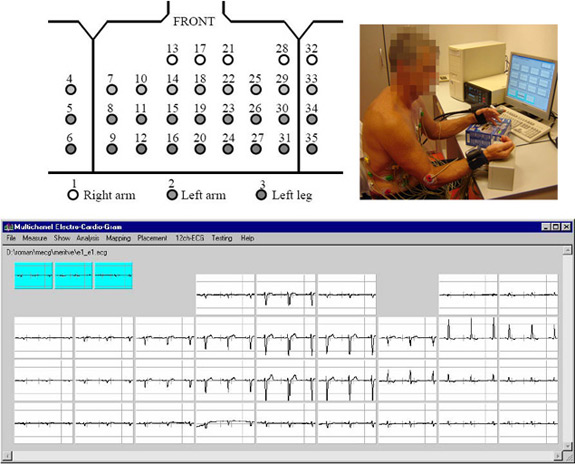Personal, possibly wireless, ECG is crucial for many e-health applications that incorporate tele-monitoring. It offers full mobility and comfort for potential users from patients to elderly people, and active or recreation sportsmen. Mobile telemedical systems, built from networked sensors and local control units, are becoming more and more important, especially in the care of patients that are isolated or traveling, far from a reference hospital. Tele-medical systems must be small with a low power consumption, available for a low cost, not complicated to wear, and should have a data interface (push bottom, keyboard, voice, etc.) that is tailored to the patient.
There are diverse requirements that are necessary for widely usable wireless ECG device, e.g. safety, reliability, small dimensions, simple installation or implantation, small power consumption, etc. However, medical doctors in Emergency Centre can usually read and express diagnoses only on the basis of the standardized 12-leads ECG, which requires 10 electrodes on a predefined body positions. The last requirement is in a contradiction with almost all previously mentioned requirements.
We use the benefit of available multi-channel ECG measurements (MECG) that were acquired during many past investigations. MECG includes also all standard electrodes, so the standard 12-leads ECG can be easily reproduced.
We identify the minimal set of electrodes, needed for satisfactory diagnoses or generation of the standard 12-leads ECG by using different approaches, based on optimization, matrix algebra, correlation, and interactive visualization.
Identification procedure will be personalized providing different transformation parameters for different persons. If the calculation complexity of the new algorithms will exceed the capacity of a single computer, we plan to run them on the parallel computing cluster.

|
